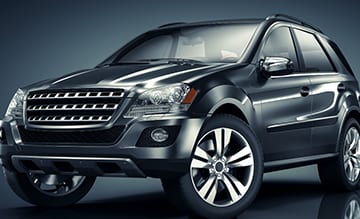
Let’s get started by asking you two questions
- Do you need a replacement business car, SUV, van, or pickup truck?
- Do you need tax deductions this year?
If you answered “yes” to both questions, here are some ideas for you to consider:
Buy a New or Used SUV, Crossover Vehicle, or Van with a GVWR Greater than 6,000 Pounds
Let’s say that on or before December 31, 2018, you or your corporation buys and places in service a new or used SUV or crossover vehicle that the manufacturer classifies as a truck and that has a gross vehicle weight rating (GVWR) of 6,001 pounds or more. This newly purchased vehicle gives you four big benefits:
- Bonus depreciation of 100 percent (new, thanks to the TCJA)
- Section 179 expensing of up to $25,000
- MACRS depreciation using the five-year table
- No luxury limits on vehicle depreciation deductions
Buy a New or Used Pickup with a GVWR Greater than 6,000 Pounds
If you or your corporation buys and places in service a qualifying pickup truck (new or used) on or before December 31, 2018, then this newly purchased vehicle gives you four big benefits:
- Bonus depreciation of 100 percent
- Section 179 expensing of up to $1,000,000
- MACRS depreciation using the five-year table
- No luxury limits on vehicle depreciation deductions
To qualify for full Section 179 expensing, the pickup truck must have
- a GVWR of more than 6,000 pounds, and
- a cargo area (commonly called a “bed”) of at least six feet in interior length that is not easily accessible from the passenger compartment.
Short bed. If the pickup truck passes the more-than-6,000-pound-GVWR test but fails the bed-length test, tax law classifies it as an SUV. That’s not bad. It’s still eligible for the $25,000 SUV expensing limit plus 100 percent bonus depreciation. See Section 1 above for how this works.
Buy a New or Used Qualifying Cargo or Passenger Van with a GVWR Greater than 6,000 Pounds
A new or used cargo or passenger van bought and placed in service on or before December 31, 2018, can qualify for four big tax benefits:
- Bonus depreciation of 100 percent
- Section 179 expensing of up to $1,000,000
- MACRS depreciation using the five-year table
- No luxury limits on vehicle depreciation deductions
Cargo van. To qualify for full Section 179 expensing, the cargo van must
- have a GVWR of more than 6,000 pounds,
- fully enclose the driver compartment and load-carrying area,
- not have seating behind the driver’s seat, and
- have no body section that protrudes more than 30 inches ahead of the leading edge of the windshield.
If the van passes the GVWR test but fails one of the other qualifying tests listed above, the law deems it an SUV.
Passenger van. If the van has a GVWR of greater than 6,000 pounds and seats more than nine people behind the driver’s seat, it is a tax law–defined passenger van, not an SUV, and it qualifies for full Section 179 expensing of up to $1,000,000 and 100 percent bonus depreciation.
Buy a Depreciation-Limited New or Used Car, SUV, Truck, or Van
If you or your corporation buys and places in service a new or used passenger vehicle such as a car (or a pickup, SUV, or van with a GVWR of 6,000 pounds or less) on or before December 31, 2018, then you or your corporation may claim up to $8,000 in bonus depreciation.
Tax reform increased the 2018 luxury passenger vehicle depreciation limits to
- $10,000 for the first taxable year in the recovery period,
- $16,000 for the second taxable year in the recovery period,
- $9,600 for the third taxable year in the recovery period, and
- $5,760 for each succeeding year in the taxable period.
Here’s how this works: Say you buy a car. You add the $8,000 in bonus depreciation to the $10,000 car limit, for a 2018 limit of $18,000. To get to this limit, you can use a combination of bonus depreciation and regular depreciation. You reduce the $18,000 limit by any personal use.


